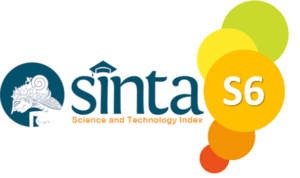HUBUNGAN ANTARA SELF EFFICACY DENGAN QUARTER LIFE CRISIS PADA MAHASISWA S1 KEPERAWATAN SEMESTER AKHIR DI UNIVERSITAS MUHAMMADIYAH KUDUS
Kata Kunci:
Efikasi Diri, Krisis Seperempat Abad, MahasiswaAbstrak
Fase transisi dari remaja menuju dewasa dimulai sejak usia 20 tahun, terutama mahasiswa semester akhir. Mereka akan dihadapkan dengan berbagai pertanyaan tentang identitas, masa depan, serta pencapaian hidup. Krisis kehidupan diusia ini mampu dilewati dengan baik, ketika individu memiliki kepercayaan diri yang tinggi terhadap kemampuan dalam menjalankan tugas serta mencapai mimpi dan harapan. Penelitian ini bertujuan untuk mengetahui hubungan self-efficacy dengan quarter life crisis pada mahasiswa S1 keperawatan semester akhir. Desain penelitian yang digunakan adalah kuantitatif dengan teknik korelasi. Instrumen yang dipakai dalam penelitian adalah skala Quarter Life Crisis dan General Self Efficacy Scale. Jumlah sampel sebanyak 106 responden dengan kriteria mahasiswa usia 20-25 tahun yang sedang menyelesaikan tugas akhir. Teknik analisis data yang dipakai untuk menguji hipotesis adalah Spearman’s Rho dengan bantuan SPSS 27.0 for windows. Hasil penelitian menunjukkan terdapat hubungan negatif antara self-efficacy dengan quarter life crisis pada mahasiswa S1 keperawatan semester akhir (p = 0,000, rxy = -0,671). Artinya semakin tinggi self-efficacy, semakin rendah pula quarter life crisis yang dialami mahasiswa S1 keperawatan semester akhir.
The transition phase from adolescence to adulthood is commonly experienced by individuals since the age of 20, especially final semester students. They will be faced with various questions about identity, future, and life achievements. The belief that a person has in the ability to complete tasks and achieve goals, can help individuals deal with life crisis better. The purpose of this study was to determine the relationship between self-efficacy and quarter life crisis in final semester undergraduate nursing students. This research design is quantitative with correlation technique. The instruments used are the General Self Efficacy Scale and the Quarter Life Crisis Scale. The number of samples was 106 respondents with the criteria of students aged 20-25 years who were completing their final project. Data analysis techniques using Spearman’s rho with the help of SPSS version 27 for windows. The results of the analysis showed a negative relationship between self-efficacy and quarter life crisis in final semester nursing undergraduate students (p = 0,000, rxy = -0,671). This mean that the higher the self-efficacy, the lower the quarter life crisis experienced by final semester undergraduate nursing studen.




